Cross-posted from DFABlog.
There has been much discussion about the savings behaviour of households recently. The starting point is the ABS Savings Ratio Data, which is derived from the national accounts statistics. It shows that after the 2007/2008 GFC hiatus Australian households started to saving, and save hard. The following chart shows the trend from 2000, both in terms of gross disposable income, and the savings ratio, which on average is at over 10%.
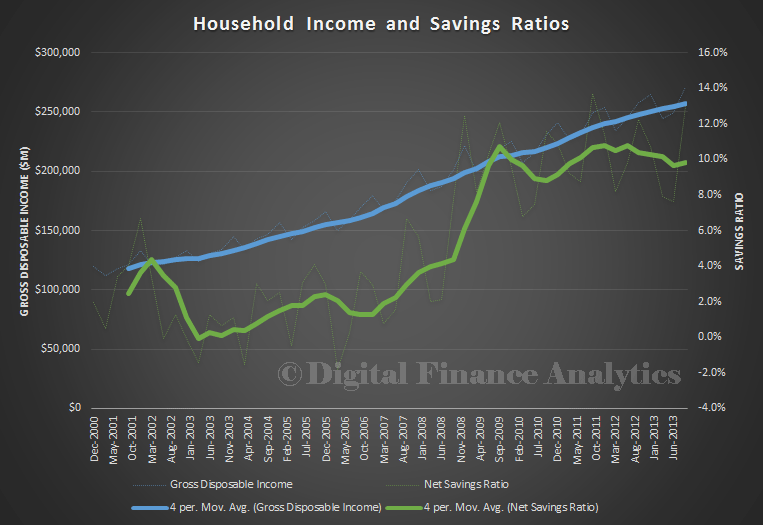
There are a series of questions flying about, for example, are the calculations accurate, or should elements like obligatory superannuation contributions be ignored, as they are forced savings? How to account for advanced mortgage repayments? Will the trend continue, or given the low current savings rates, flip to consumers spending more, and saving less, as the RBA seems to want to encourage?
Well, DFA has started to unpick this complex picture. The starting point is to apply segmented analysis to the data. So today, we present some of our segmented findings, using the data from our household survey. At once, we find averages are hiding important differences. So for example, Down Traders, those looking to sell and release capital, and possibly make additional property investments, reveal very significant income growth, and have a savings ratio of about 15%. They are the most cashed up sector of the population, partly in preparation for retirement, and partly thanks to recent property price gains.
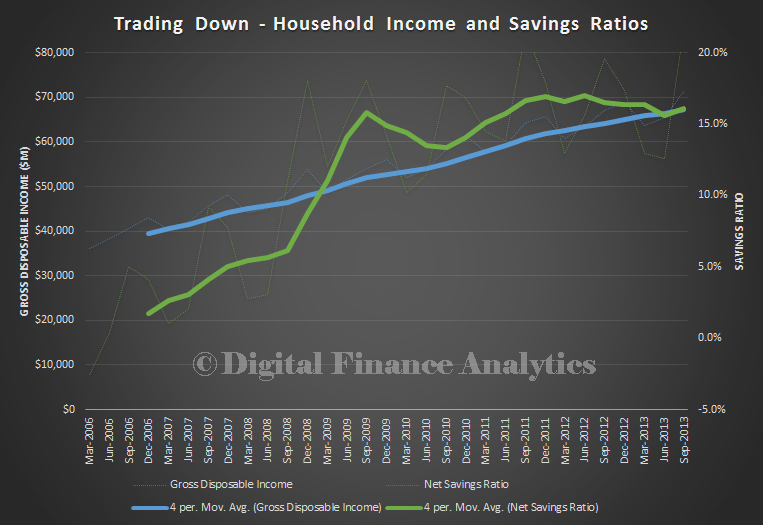
Compare this with First Time Buyers. These households have not seen much income growth in recent times, and their net savings ratio has fallen close to zero. As we have highlighted previously, many first time buyers are struggling with rising credit card debts. They have little left in the tank for emergencies, like sudden illness or unemployment.
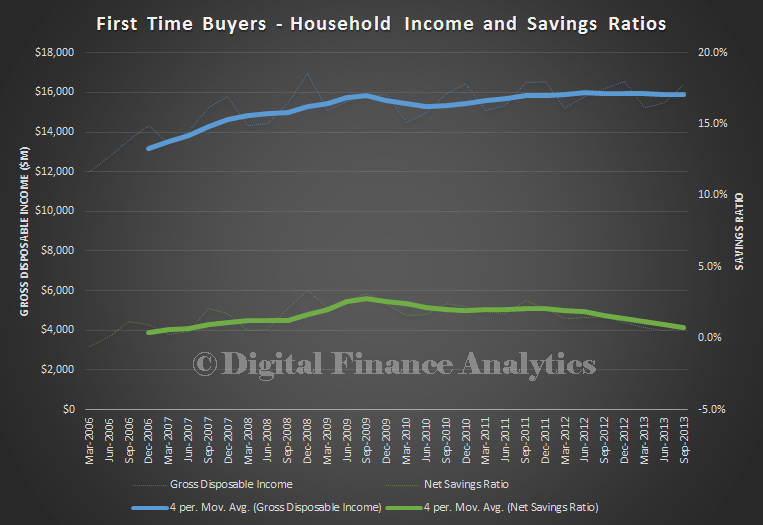
Our “Want to Buy” segment shows quite similar trends to the First Time Buyer, though with slightly more savings, revealing a savings ratio of 3%, but falling.
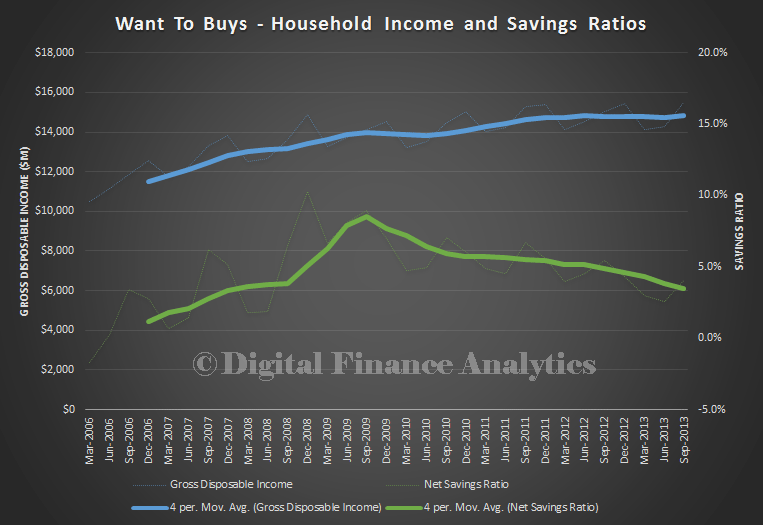
We won’t present the analysis of all the segments in our survey, but the data from the Investor segment is enlightening. Here we see quite significant income growth, but savings are falling. This could be because they have been spending hard to grab more property. We need to look at detailed survey responses to check this.
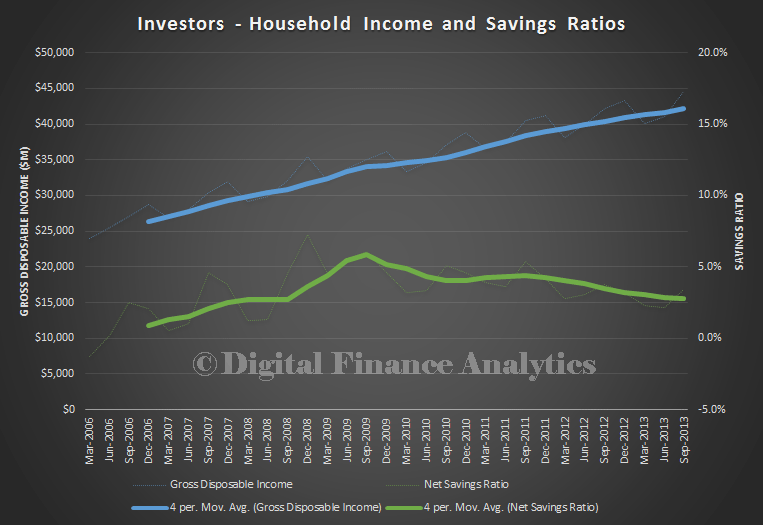
So, the conclusion we have reached is that whilst overall savings may be up, it is split across different household groups, some are savings hard, still, others are seeing the cost of living eat into free cash, so savings are down. The key question for me is, how to encourage down traders to spend more, when they are saving for retirement, turning more of their assets into cash. and building a defence against future uncertainty. In addition, we should not assume that because average savings ratios are high, everything is fine. It’s not, because, again, averages mask important differences.
In part 2 of our analysis, probably the last post before the Christmas break, we will look at where segments are saving, and also examine segmented household plans for saving in 2014. This will help to answer some of the questions raised above.

